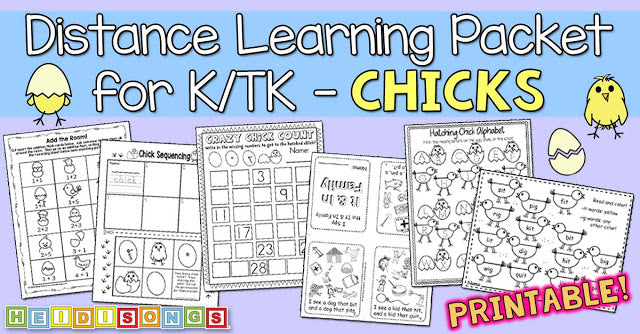

We often get emailed questions from parents on how to help their children. As I answered this question, I thought that the content might make a great blog post, so I decided to post it here. I hope it is helpful to you!
Question:
“My son is a special needs child who is having difficulty remembering sight words. Do you know of success stories (using HeidiSongs) with special needs children and what exactly do I need to start with?”
Answer:
We have heard from many, many special ed teachers over the years that swear by our products, so I am certain that they are good for children with special needs! I have also had lots of special needs children in my own class over the years who have responded well to my products and methods. (Some children were as yet unidentified, and some were mainstreamed.)
I have written a few blog posts specifically on how to help children learn the sight words. Here is one blog post called, Tips for Using Sing and Spell Effectively in the Classroom.
Here is a link to another blog post, called “How I Got 18 Out of 23 Kids to Master 100% of their Sight Words” is really more focused on classroom instruction, but there might be some bits of information in there that could be useful to you.
When your child is working on sight words using HeidiSongs Sing and Spell DVD’s, here are the main things to remember:
1. Your child should be up and moving along with the DVD, not seated and passively watching. He should be singing along as much as he can, and doing the movements, and watching the screen. If your child needs help learning the words, then watch one song through together, and then pause it and try to sing or say the words together slowly until he gets it. Then put the DVD back on and try to sing it with the DVD.
3. Another time while your child is watching, have your child grab a piece of paper and write each word after the song plays, pausing the DVD as is necessary. Have him or her tell you what word it is.
4. Another time when your child is watching, pause the DVD after a word that you know is hard for your child to remember. Give your child some play dough and have him or her roll the dough into a snake and then form the letters of the word out of the dough. Have your child touch the letters and feel the word, saying the word as he does so. Then ask him to spell it aloud to you before squishing it up and starting over.

5. Another time when your child is watching, pause the DVD between words. Have him find a flash card with that word on it. Have him jump or hop one time for each letter while spelling it aloud.

6. You may wish to also get a copy of the CD that goes with the DVD so that you can play the songs in the car as you drive from place to place. Give your child a dry erase board and some markers to keep in the car, and have him write the words that go with each song that is playing. If it is hard for him to visualize what the words look like, keep some flashcards on a chicken ring in the car as well so he can refer to them. If you keep them on the ring in order, it will be easier for him or her to use.

To Maximize your time, use the DVD at home for active learning, but keep a CD in the car for constant review!

Keep a set of flash cards on a ring in the order of the songs on the CD, and keep that in the car, too.
7. As your child gets better and better at the learning the words on a certain DVD, then you may want to try this: a teacher friend of mine used to have her grand daughter watch my DVD’s in her classroom after school each day and write the words as the songs played. The deal she made with her was that if she could write the word without even looking at the screen (just by listening to the song and hearing the intro!) she could forward the DVD to the next song right away and get that much closer to play time. You wouldn’t believe how good she got at identifying the word, using only the intro!
Have fun, and good luck!
Heidi
![]()
Parents and teachers, do you know another great way to help children learn sight words at home? Do you have an idea for helping special needs children that really helps these tricky words “stick?” Please share!
Thanks!
Heidi



















